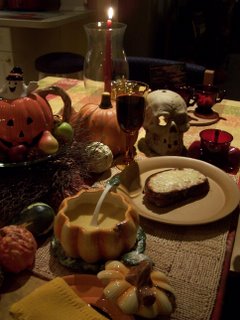
 Breads Hearty and Wry:
Breads Hearty and Wry: Our European bread odyssey at the French Culinary Institute moves into week three and we arrive in the land of the Rhine River for a taste of the breads of Germany. This is the Maitre Boulanger's forte, as he is a native of the country, and he gives us a quick briefing on the impervious nature of the tough rye seed, which must be soaked longer than other grains for proper fermentation.
We begin with the venerable Kaiser roll, and learn how to quickly mix the simple, serviceable dough, shape it into rounds and stamp it with a tool that gives it that distinctive pinwheel pattern. Some of our rolls proof too long, and don't expand like they should in the oven, but the slightly tart, nutty taste and golden crust is distinctly genuine.
My teammate "A" is working like a dynamo today. She is anticipating what the chef will need, and sprinting ahead in terms of scaling out the remaining recipes. Eventually, I start to catch up to her, after a serious case of the Monday blahs, and we begin to work as a pretty efficient team, quickly moving through one job after another.
Later, we get to work on a multigrain rye bread that is packed with toasted grains -- sesame seed, flax seed, sunflower seeds and rolled oats. I am salivating as I sniff the aroma of grains toasting in the oven.
All this is the prelude to some serious wrestling with rye. The Maitre Boulanger pulls out a large round tub of "
rye saur" starter and informs us that this formula was first mixed 100 years ago in Germany. "Treat it with care," he advises. The starter is a stiff and grainy caramel-colored mixture that looks pretty healthy given its century-old status. There is a wonderful strong smell of rye that is reminiscent of a brewery. The Maitre Boulanger invites us to taste the starter, and I savor the powerful flavor of intense, sour rye on my tongue. We take a scoop of the starter, add wheat flour, rye flour and water, and tomorrow we shall see what develops.
© 2006 T.W. Barritt All Rights Reserved































